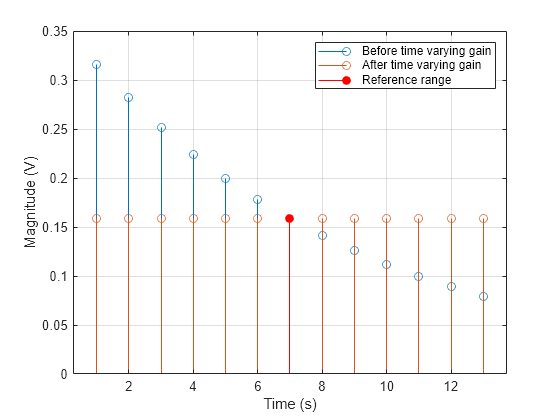step
System object: phased.TimeVaryingGain
Namespace: phased
Apply time varying gains to input signal
Syntax
Y = step(H,X)
Y = step(H,X,L)
Description
Note
Starting in R2016b, instead of using the step method
to perform the operation defined by the System object™, you can
call the object with arguments, as if it were a function. For example, y
= step(obj,x) and y = obj(x) perform
equivalent operations.
Y = step(H,X)X. The
process equalizes power levels across all samples to match a given reference range. The
compensated signal is returned in Y. X can be
a column vector, a matrix, or a cube. The gain is applied to each column in
X independently. The number of rows in X
cannot exceed the length of the loss vector specified in the
RangeLoss property. Y has the same
dimensionality as X. X can be single or double
precision.
The size of the first dimension of the input matrix can vary to simulate a changing signal length. A size change can occur, for example, in the case of a pulse waveform with variable pulse repetition frequency.
Y = step(H,X,L)L as a columns vector. Use
this argument only when you set the RangeLossSource property to
'Input port'. The length of L must be equal
to or greater than the number of rows of X. L
can be single or double precision.
Note
The object performs an initialization the first time the object is executed. This
initialization locks nontunable properties
and input specifications, such as dimensions, complexity, and data type of the input data.
If you change a nontunable property or an input specification, the System object issues an error. To change nontunable properties or inputs, you must first
call the release method to unlock the object.

